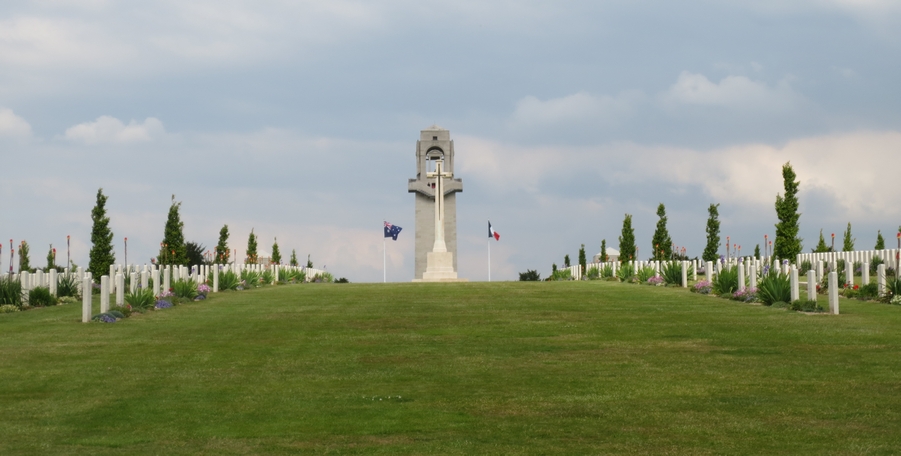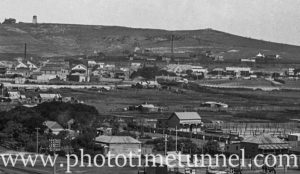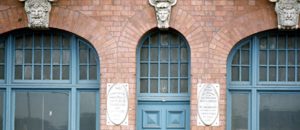Excerpt from The Hunter Region in The Great War, by Greg and Sylvia Ray
The winter of 1917-1918 was almost as bad as the one before it, but at least the troops knew what to expect. They expected cold and snow, and they also expected a big German assault as soon as the weather improved. Behind their own lines, the Germans were training for a new phase of long-awaited open warfare.
Knowing this, the Allied troops were full of dread. The futile Passchendaele bloodbath had sapped the Australian battalions and weakened the core of the entire British army. Even famous British regiments had been shockingly depleted and were now being reinforced by barely trained youths.
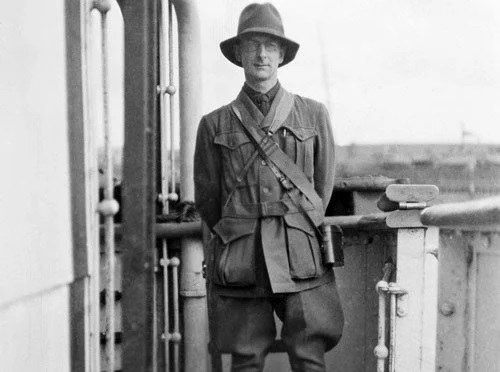
Australian war historian Charles Bean described some of the new reinforcements from England:
For two days companies of infantry have been passing us on the roads – companies of children, English children, pink-faced, round-cheeked children, flushed under the weight of their unaccustomed packs, with their steel helmets on the back of their heads and the strap hanging loosely under their rounded baby chins.
Everybody knew that Russia was now out of the war and that meant the Germans had been able to shift battle-trained divisions from the east to the west. Everybody also knew the Americans would soon be arriving in serious numbers and the Germans were facing their last chance to break the Allies. Allied troops were worried about the expected big German push, and they worked hard building new trenches, strong-points and barbed wire entanglements. T.A. White wrote in the 13th Battalion history:
The defection of Russia released 40 German divisions for our front, and so changed the character of the war by losing us the initiative and placing us on the defensive. As an overwhelming enemy attack, so boastfully foretold, was likely to eventuate at any time we engaged in a policy of strengthening all posts and trenches, wiring heavily and making dumps of rations, water and ammunition in convenient places.
As March came the tension grew in the Allied lines. The German attack could come any day.
Then, in late March, the Germans made their move. They smashed with incredible force and speed towards Amiens and Paris. In many ways the advance was everything the Germans had promised. A number of British units at the point of impact were simply broken and scattered, starting a retreat that appeared unstoppable except by total annihilation.
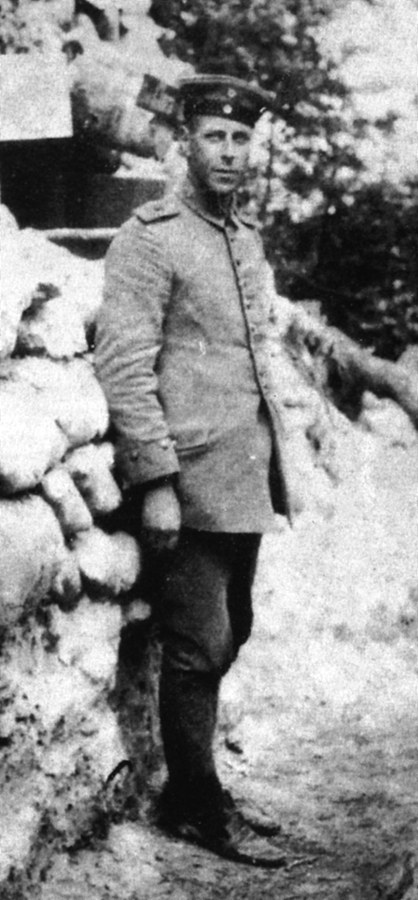
A jubilant German gunner, Herbert Sulzbach, described the beginning of the great assault from the German side:
At 9.40 the creeping barrage begins, and under its cover the thousands, and thousands more, and tens of thousands of soldiers climb out of the trenches, and the infantry assault begins: and the infantry assault has now succeeded. We move through St Quentin at a trot, and the British are hardly firing.
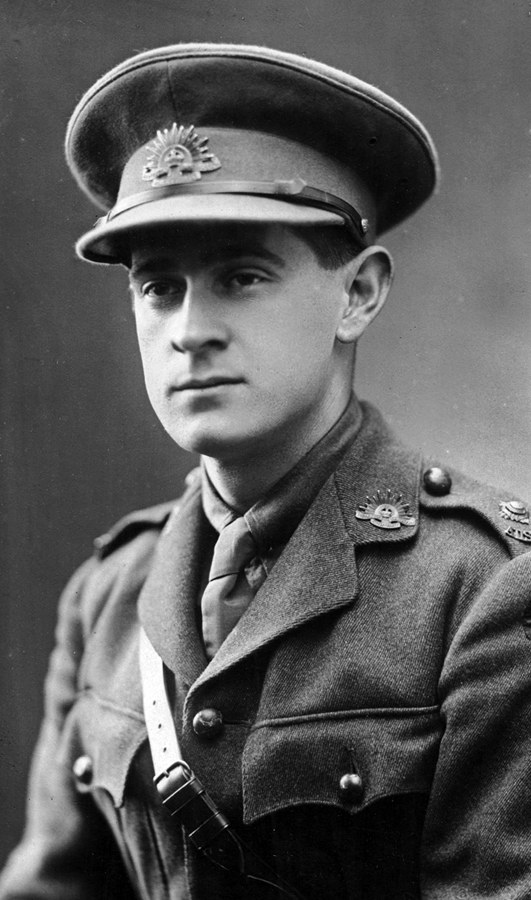
Australian soldier Ben Champion – just about to turn 21 – was at a training school behind the lines when the news broke:
The alarm bugle went and we doubled on to parade wondering what was the matter. The commanding officer was talking to the adjutant and anyone could see they were perturbed about something. He then told us that he had had rather alarming news and that we were to proceed back to our units immediately. Fritz had broken through on the Somme and all schools were to be closed as this looked very serious.
We were packed into fast lorries and rushed back in a couple of hours. Rejoining the Battalion, Colonel Stacey showed us Sir Douglas Haig’s order of the day: “We are again at a crisis in this war. The enemy has collected on this front every available division and is aiming at the complete destruction of the British Army.”
The official news through is that Fritz is right through Dernancourt and Albert. All the country we once took is gone back to his hands; just imagine the loss to us in dumps of material etc, besides men and guns!
On his way up to the line Champion was wounded by a shell and evacuated to hospital where his leg was amputated. For him, the war was over.
There is no front line between us and the enemy
When news of the German breakthrough came, Australian General R. L. Leane told the men: “There is no front line between us and the enemy. His position is not known. We start at midnight on a 20-mile march toward Albert. We do not even know that the road is clear or whether we can beat him to Albert. We must protect our own flanks and be prepared for anything”.
The Germans were on their way to Amiens, which was an important transport hub and a key objective. About 20km out of Amiens was the village of Villers-Bretonneux, which overlooked the bigger town and from where – if they took the village – the Germans could fire onto Amiens and its railway station. The fight for Villers-Bretonneux loomed as a make-or-break struggle against a background of chaos in Allied ranks.
Stockton Digger Ralph Scobie reminisced in later years about arriving in France in March 1918:
The whole country was in a state of turmoil and we were 15 days endeavouring to locate the 54th Battalion. There were no normal rations nor one single organised meal. The only tucker was an occasional tin of bully beef and a few hard biscuits. Some days we marched north, other days south. On one occasion we were packed into a cattle truck for a rail journey to where, we knew not. Eventually we were in bad shape. I remember striding along, rifle over my shoulder, holding up my pants with the other hand.
When the heat was on in March 1918, and the British needed to stop the smashing German advance, they called on the Colonials to save the day. Among those thrown into the fight were “Maitland’s Own” 34th and “Newcastle’s Own” 35th battalions. It didn’t seem likely that the Allies could hold Amiens, especially since the Germans had a localised advantage in numbers, thanks to their troops newly transferred from the Eastern Front. The Germans had also seized hundreds of guns and thousands of rounds of ammunition from the retreating British.
According to military historian and war correspondent F. M. Cutlack, Australians were pulled from leave and from reserve to be thrown into the breach left by the collapse of the British 5th Army which had, “by the end of March, disappeared as a fighting force”. Cutlack continued:
Battalions coming back before the German divisions were ragged, mixed-up, had lost touch with their divisions, lost most of their officers, a supply of food and ammunition hardly existed, and they had no organised defence lines on which to retreat. The confusion was too vast for description.
The Australians had no illusions about their turn coming. The enemy was massing in front of the 35th for a blow down the main road to Amiens . . . in what the British openly believed would be a retreat from Villers.
The Australians were advancing through retreating British troops. 13th Battalion historian White wrote:
We saw evidence of rout everywhere in the disordered groups of British troops retiring along every road. In themselves these groups were no more than disheartened and weary, but the various units were mixed together in an apparently tangleless mass. They all told of the nearness of the Bosche and his tremendous resources of tanks and artillery. Nine staff officers were crowded on a small car hastening to the rear.
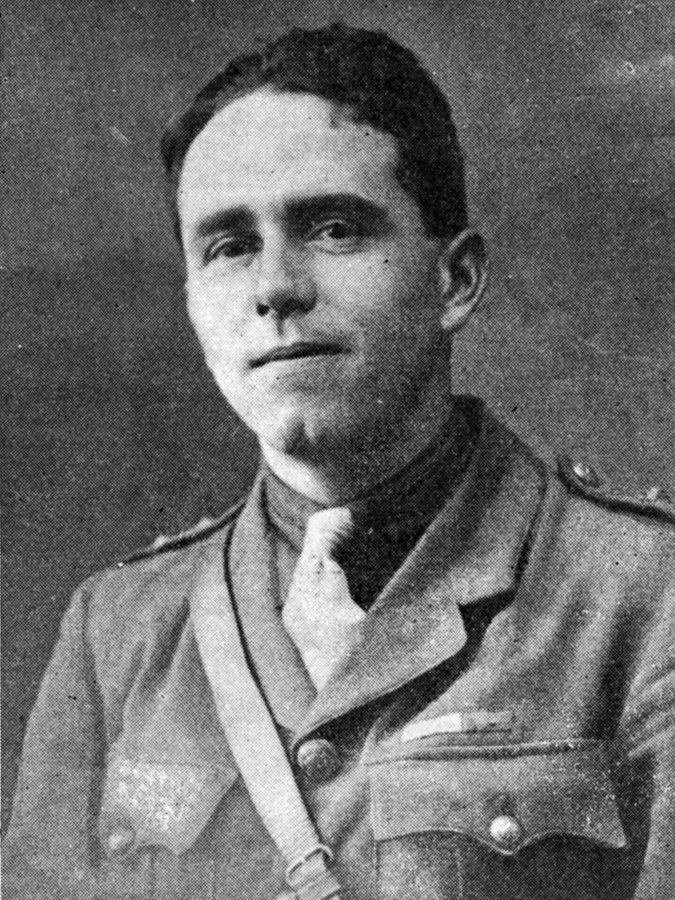
Australian VC winner Joe Maxwell described the critical days:
A wide gap had been blasted in the Allied line and the enemy had bounded forward a number of miles. At a moment’s notice we were bundled into a train and rushed south pell-mell. Four Australian divisions were raced south in a desperate effort to stem the vast grey tide of the enemy which threatened to engulf our armies and our hopes. It was the most dramatic train journey of our lives.
Every road was choked with refugees, villagers plodding south before that ever-advancing grey tide with its prelude of fire and smoke and destruction . . .
At the sight of the returning Australian columns their faces lighted up. We were cheered, welcomed with wild Gallic enthusiasm. A number turned with us and marched back shouting ‘Vive l’Australien’ towards that ominous grey-black smoke cloud that advanced over hill and valley.
Vive l’Australien!
The Australians had acquired legendary status among civilians, and 13th Battalion historian White wrote that, as the men passed through one town, they found villagers desperately packing their belongings:
Then, spontaneously, as it seemed, the inhabitants learned that we were Australians. They began carrying their furniture and goods back into their homes. An old man told one of our transports as he drove his empty wagon back into its shed: “Not necessary now: you will hold them”.
Maxwell wrote that the retreating British troops his unit passed were “utterly demoralised”.
Battalions were disorganised, companies were scattered like chaff, and men were wandering about aimlessly. Our orders were to round them up and attach them to our own companies.
There was no front line. All the organisation that had borne the brunt of the battering for four years had cracked up under this terrible blow . . . The only line we could find was a string of pot-holes that each held three or four men. Rain was lashing the whole countryside and it was pitch-dark.
British soldier R.G. Bultitude wrote of his unit’s flight from the Germans in late March 1918:
For the next week or so (one quite lost count of time) the retreat resolved itself into a test of endurance. The battalion managed to keep more or less together, but there was no pretence at any sort of order. Some had to drop out, either through exhaustion or wounds, sometimes stragglers from other regiments joined us or were overtaken. A few were killed by the enemy’s ubiquitous machine-guns. The latter were always more or less on our heels (and as often on our flanks).
Our food was such as we could scrounge from deserted canteens and YMCA huts. We were badly troubled by thirst; there seemed to be no water anywhere except that collected in shell holes, stagnant and impregnated with gas. Eventually we were driven to crawling about in the early mornings and licking the dew off the grass. There was no lack of ammunition, for cartridge belts, haversacks and other equipment, even rifles and smashed Lewis guns, were lying about in the wake of the retreating troops, whose physical exhaustion was such that an extra pound or two in weight might mean the difference between capture and liberty.
Bultitude wrote that, if he’d had one wish it would have been:
Send up immediately large reinforcements of fresh troops – not ragged scarecrows like ourselves; mind, but real live soldiers, and let them be Colonials.
His wish was granted.
Up they came, rank after rank, clean, shaved, in spick and span uniforms, properly armed. The awed exclamation of one of my shell-hole companions seemed to sum up our feelings to a nicety. ‘New Zealanders! Well, Gawd help Jerry!’
The Germans had captured more than 2500 square kilometres and about 75,000 British prisoners. But when they paused to consolidate, they gave the Anzac troops a chance. With makeshift brigades cobbled together from stragglers, survivors, headquarters troops and dismounted cavalry, they dug in.
By now, the long-awaited Americans were arriving at the rate of 120,000 a month. The war was at a tipping point. If the Germans couldn’t push through to the sea and to Paris now, they would lose the war.
The Anzac troops formed a thin “front line” that was often no more than a string of shell holes. As the battles raged, the distances between isolated posts grew longer. But the defenders made the Germans believe their forces were larger than they really were. They held off the enemy, then snatched back lost ground, largely by bayonet, prompting the Germans to retaliate with a horrendous artillery barrage.
“Each man felt the world-seriousness of holding the over-weening and vaunting Bosche at that stage, and each felt a tremendous personal responsibility in the matter. The shelling was so terrific that even veterans of Gallipoli and Pozieres were dazed,” White wrote.
Newcastle Digger Ralph Scobie described the conditions during that period as:
. . . among the most frightful and difficult war situations that could possibly be recorded. Gas and high explosive shellfire seldom ceased. Men were worked to the limit of human endurance.
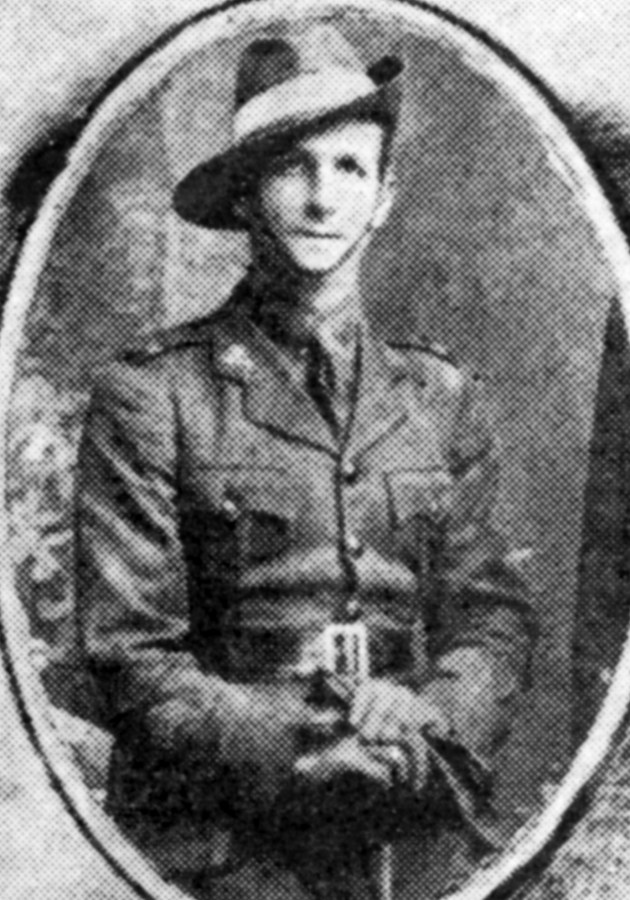
At Villers-Bretonneux with the 35th Battalion was railway porter Sgt Cecil Wilfred Howard, who wrote:
We proceeded past the town on the outskirts and up a rise until we crossed a road leading to Abincourt from Villers-Bretonneux. We passed an aerodrome and came to a fairly large cemetery where we halted. Lights could be seen in Abincourt of motor vehicles moving about the streets. I was ordered to move forward, skirmish order, just before dawn and see how close I could get to the town. We had only proceeded about a quarter of a mile when in the early light we ran into machine-gun fire and I ordered “dig in as fast as you can”.
I had 14 men, two lance corporals and two Lewis guns.
Howard set up posts about 400m apart in a wheatfield and waited. Rumours of movement in the German lines added to the tension, which built for a few days before the storm broke over the Australian lines:
I doubled the sentries as it looked as though the big push would be resumed by the German Army, probably at daylight. It was raining lightly for a few days and we were wet, miserable and cold and we did not have any hot food coming up, only cold bully beef and biscuits and not much of that either.
I was not to know that, just after dusk when the mess orderlies went back for our rations and brought them up to us that night, 3rd April 1918, it was to be our last meal until about midday on the 6th.
Bulahdelah-born Howard described some scenes in the front-line:
A Digger who was in the outpost with me was practically a new reinforcement from Australia and had not had much experience. One afternoon, April 3, I think, the day before the big push, we were in our trench which was only about three feet deep. The enemy artillery was firing towards us, really searching for it, when a shell landed almost on top of us. We ducked when we knew it was on us, but unfortunately the new Digger did not, and he got a nasty piece of iron in the back of his head, knocking him out. I laid him on his chest and there was a piece of shell sticking out of his head. Private Bill Koos was his name and he came from Toronto. He was carried out by stretcher bearers after dusk. He later wrote to me from a hospital in London.
April 3 and 4 passed, and Sgt Howard told his men to stand to just before dawn:
I was bringing in the last of the sentries when we heard a barrage of artillery shells coming over and we rushed to our outpost. We then could hear motor transports moving over in the town and as the light of the day gradually came on the sight we saw from our advanced post was fearsome as thousands of German troops were unloading from transport trucks about one km from us.
A runner came forward to tell us to hold up the enemy with machine-gun fire as long as possible. What a happy(?) moment it was!
I had two Lewis light machine guns, one at each end of the trench, and I was in the centre of the post.
We were stunned and amazed to see the thousands of German troops go marching into line on the outskirts of the village and they formed into companies of about 30 men in each line and began to advance en masse of about 300 men in each company and of Division strength. Each mass of men was aimed at each of our four outposts.
All we could see was wave after wave of troops marching down that long hill to crush us, and we only a hatful of forward posts with only the 9th Australian Brigade at our backs.
The sight was amazing to us who lived to tell the tale. Indescribable it was and awesome as we could not visualise any chance of survival – and a cemetery of all places behind my post of 17 soldiers.
Telling the truth, I did not give the word to fire until the front of the massed ranks, 30 men abreast, were about 60 yards from us.
The slaughter was terrific. One of my guns swept to the right and the other to the left converging in the centre. The Vickers opened fire on the ranks about 800 yards to the rear as rank after rank went down with huge gaps going right through them. After an hour and a half of this terrible slaughter all the enemy were halted in the low ground 600 yards in front of us.
Wave after wave of troops
Howard saw two nearby Australian posts overcome before his own was forced to withdraw, each man covering the other as they zig-zagged back to the cemetery at their rear. They found the newly consolidated Australian front line and joined in the fight to pin down the next German advance:
Later on another huge wave of German troops began coming up to join their front line and second in command of the battalion gave us orders to slowly retire. We made a move back and retired through the aerodrome and made a stand between it and the village of Villers Bretonneux.
Howard described a rare British cavalry action, with the Australians advancing alongside the mounted men, holding onto their stirrups until the pace got too fast:
Scots Greys of the Horse Guards came up. It was a terrific show to see their final charge at the gallop when they were on top of the Germans with their long lances out and the men lying over the necks of their horses, then their wheeling and turning using their swords and slashing their way back. They returned but only about half the number that had attacked.
Soon it became apparent that the seemingly impossible had happened:
We formed a line again and all was quiet for a while. It seemed incredible to us that 3000 men of the 9th Australian Brigade had actually stopped 30,000 German troops in an offensive, but it proved right.
More brigades of our division who had been held in reserve were now coming forward on our left flank and down near the river.
We were almost exhausted and starving. No food came up to us and we only had biscuits and very little water left. We were soaking wet and extremely cold. Our overcoats weighed a ton on our backs.
Howard found himself in deadly danger when he went out on patrol and was trapped, with comrades, by accurate German sniper fire. The small party of Australians used their entrenching tools to dig shallow pits:
After building the small mound in front each man scraped and scraped until it was like a grave and then rolled in. This went on for hours until we were below the level of the surface. The snipers tried to knock the mounds down all morning, so it went on as daylight emerged and their aim got better.
We just had to lie there flat on our stomachs and let it rain until we were only able to keep our heads up out of the water and hear the whiz of bullets all around and over us.
We were cold, miserable and thin with no food now for two nights and one day. Going well into our second day, lying in water, I began to suffer cramps in my stomach with violent pains which were doubling me up about every hour, and sweating. Towards late afternoon I was slowly losing consciousness.
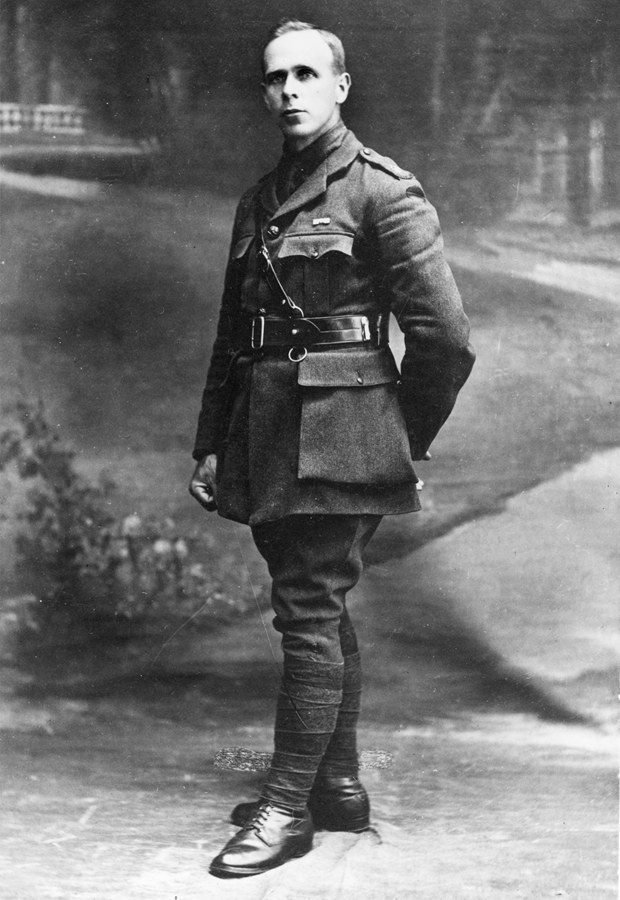
The party was saved by Newcastle officer Captain Hugh Connell of the 35th Battalion, who got Lewis guns in position and cleared the Germans out. Howard and his comrades were taken to hospital where he awoke “on a stretcher, mad with hunger”. Connell was one of the acknowledged heroes of the action at Villers-Bretonneux. A former schoolteacher and member of the pre-war militia, Connell had already won the Military Cross in 1917, and as the German hammer struck in 1918 he was awarded a bar to the medal for playing a key role in ensuring the Australians held, against all expectation. According to official records, when the Germans threatened to outflank Australian positions, Connell “personally reconnoitred the ground and cleared up the position”.
“In the later attack by the enemy the same afternoon the troops on our right flank gave way, our own flank fell back, and for a time the position was very critical. Captain Connell gathered up what stragglers he could find and with these denied the enemy entrance to the eastern side of the town until counter-attack could be launched. His resolute courage and determination were a magnificent example to the troops and were responsible to a large degree for the successful defence of the town.” A witness wrote that Connell, on the morning of April 4, went “from end to end of that thin line of men stretched from the aerodrome to the cemetery without any form of natural cover, giving a word of advice here, one of encouragement there, to men who had for hours held back massed formations of the enemy.” After Villers-Bretonneux, Connell was promoted to major. Later in the war he was awarded the Distinguished Service Order and when he returned to Australia he was elected to the NSW Parliament, representing Newcastle.
The diary in Newcastle Regional Museum of a soldier named Ernest Brigg – whose records appear unable to be traced – records the following:
We had to try to stop the all-conquering advance of the German army. We had been in the line for a week before the great battle for the village [Villers-Bretonneux] began. At 5am on the 4th of April 1918, the Germans attacked us in thousands. They came over no-man’s-land shoulder to shoulder, wave behind wave, as far back as we could see. The shell, machine gun, lewis gun and rifle fire was awful. My own rifle grew too hot for me to handle properly.
It was no use calling out to a comrade, one’s voice was lost amidst the terrible songs of death. The enemy went down in hundreds yet they came doggedly on. At last we were hand to hand with the enemy and the bayonet came into play. The shellfire ceased as it was impossible to tell friend from foe.
The shrieks of men in agony, the groans of dying men trodden underfoot as the two armies met before Villers-Bretonneux was something that has been indelibly printed on my brain. Our stretcher bearers had nearly all come to grief and we had to do the best we could for our wounded men.
“Greatest individual feat of the war”
Even after they were beaten back by the Australians the Germans refused to give up on Villers-Bretonneux. A British division was sent to hold the town and when the Germans attacked them on April 24, after a heavy barrage, the British folded again. It seemed like a disaster. From this village the Germans would be able to shell Amiens, giving the Allies a serious strategic problem.
Australians were thrown back into the fight and, acutely aware of the imminence of Anzac Day, they didn’t even wait until the next morning to mount their counter-attack. British command suggestions to attack in daylight were ignored and the Australians hurled themselves into the village well before dawn, surprising the Germans and defeating them in close combat with rifles and bayonets. They took almost 1000 prisoners and ensured the safety of Amiens. This bold recapture was later described by British Brigadier General George Grogan as “perhaps the greatest individual feat of the war”.
It was a hellish fight, and it took a shocking toll. Another 2500 Australians were dead or wounded. According to the Australian War Memorial, “Newcastle’s Own” 35th Battalion suffered 70 per cent casualties in the battles to stem the German advance.
Official historian Charles Bean wrote in his diary at the time:
Our Australians have been holding nearly half the British battle-line. I wonder if the British people will ever realise this.
Stockton Digger Ralph Scobie recalled a personal ordeal during terrible fighting at Morlancourt, where:
We relieved a Tommy battalion with 50 men to a platoon. We were only 12 men to the same stretch of the line. It was during those days that the battalion runner came looking for Scobie. I had been occupying a one-man outpost for our section machine gun, manned by Fred Smith and a fellow named Beard. They were told Scobie was not in his post. It had been blown in, and those three men dug me out with their bare hands from five feet down. I had resolved myself to have “crossed the line” since I could not flinch a muscle nor pinch myself. [Scobie lived to fight on, and was with his battalion when it took Peronne in September.]
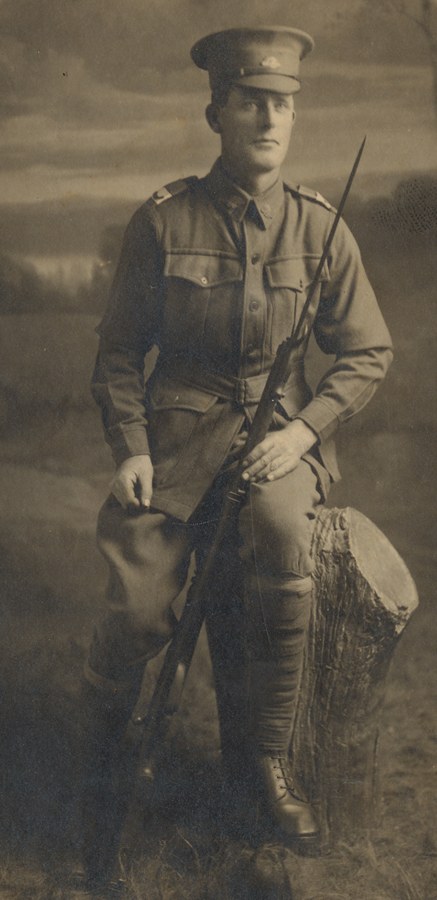
Knorrit Flat soldier Bob Gibson wrote to his father on April 26:
Our battalion has made a great name for themselves in the fighting that has taken place lately. The Tommies run and let the Hun through. We hopped into him and knocked him back. They counted 2000 dead on the battlefield after we finished with him. I had a very close shave several times. Once we were under a terrible barrage of shells. It started early in the morning and lasted all day. No-one could imagine what it was like unless they had been through it. I was black from the fumes of bursting shells. One nine inch shell hit the trench bay I was in; killed seven and wounded three. I was the only one left without a scratch, but was very sick for the rest of the day. When darkness came I crawled out and got a shovel and covered up the bodies of my dead comrades.
After the second fight for Villers-Bretonneux the Germans’ last throw of the dice was practically finished. They had tried to break the Allied lines in a handful of places and, despite some initial alarming successes, had been unable to follow through.
The Allies now started to push back, and the Australians perfected a tactic they called “peaceful penetration”. This involved advances without big artillery bombardments. The troops simply stormed sections of German trench, drove out the enemy and dared them to win it back. Often they held their gains.
It was becoming clear to the Germans that they could not now win the war. American manpower was pouring in and, even if the new arrivals were raw and poorly trained, they were well-equipped and extremely numerous. The Germans, by contrast, had no new source of reinforcements to call on. Every week that passed the Allies increased their dominance in air power, in artillery and in sheer numbers of troops.
That doesn’t mean the Germans were any easier to beat, but when the British high command recognised it was now on top, it turned the full force of its weaponry on the increasingly demoralised enemy.
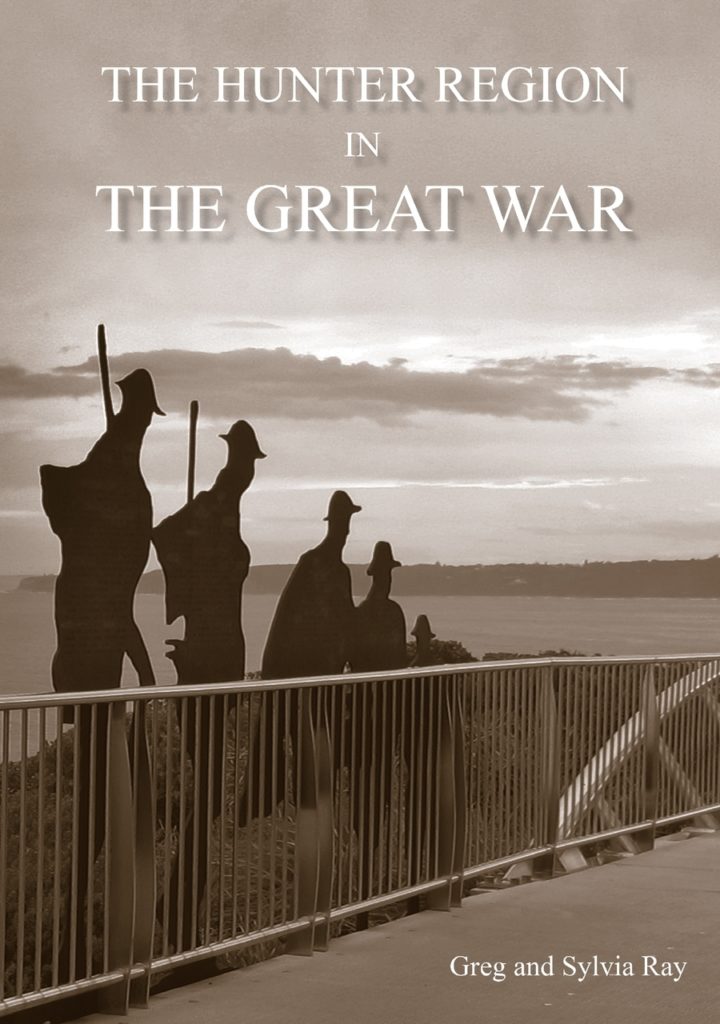
The Hunter Region in The Great War, by Greg and Sylvia Ray
The Hunter Region in The Great War commemorates the Hunter’s role in the First World War of 1914-1918, using letters and diaries to tell the stories in the words of those who experienced the conflict.

